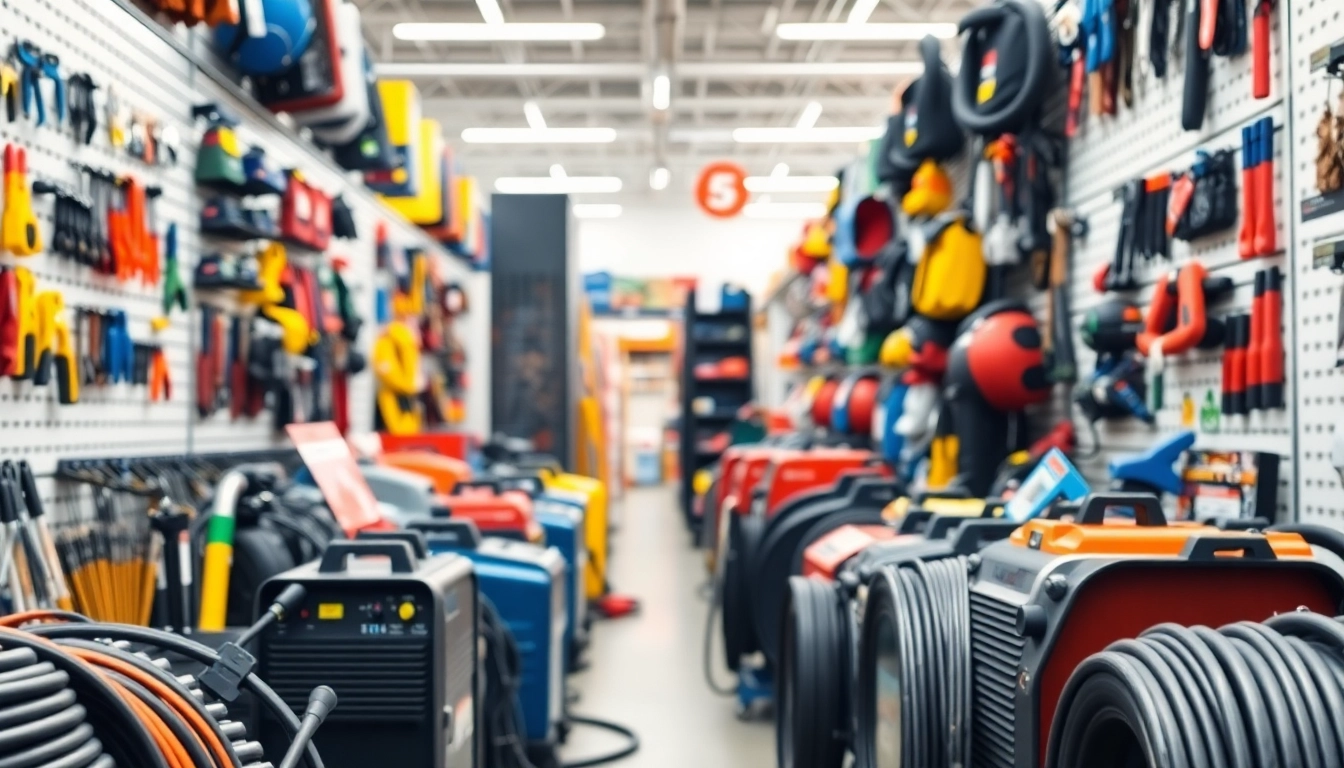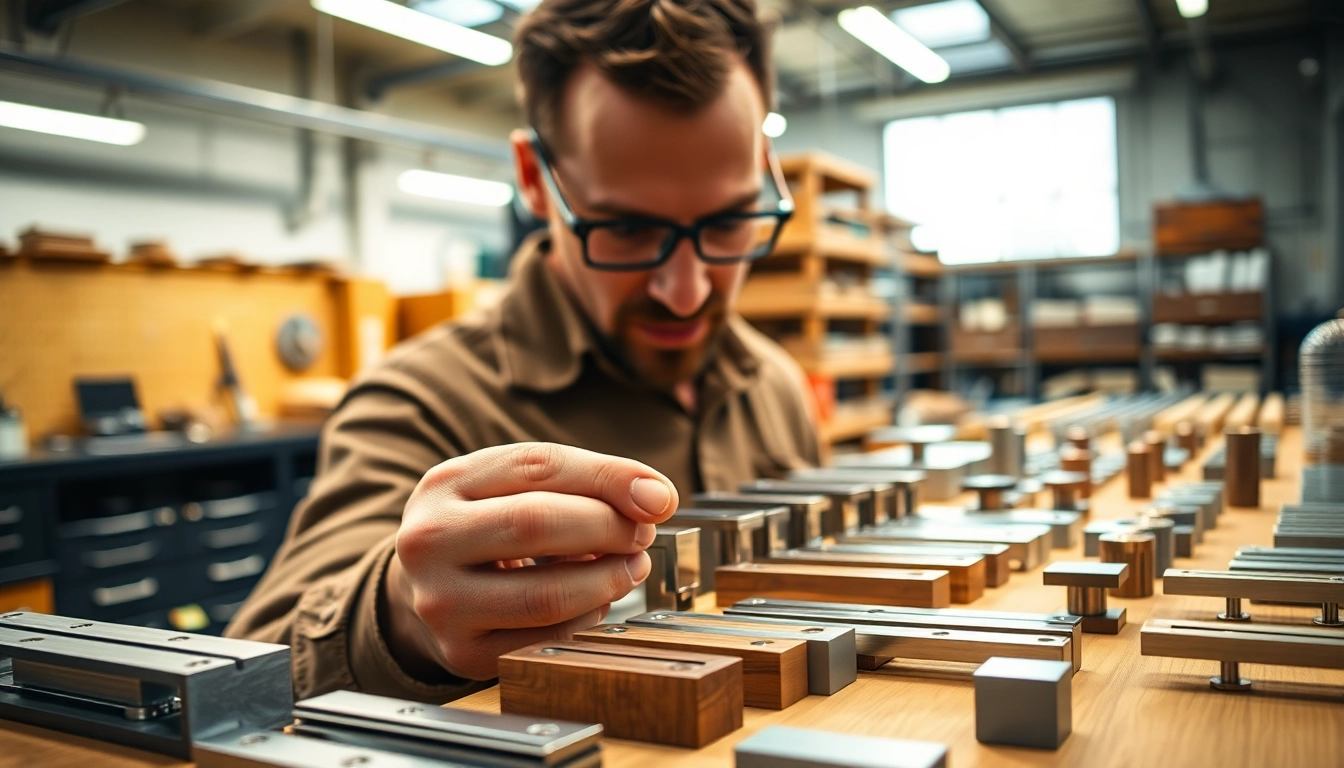Understanding Welding Supplies
Welding is a pivotal skill and trade that plays a crucial role in manufacturing and construction industries. Having the right welding supplies near me can drastically enhance the quality of work and efficiency in projects. But what exactly are welding supplies? This article provides a comprehensive overview of the essential tools, materials, and knowledge you need.
The Basics of Welding Equipment
At its core, welding combines pieces of metal using heat and pressure. The tools and materials you’ll need can vary depending on the type of welding you’ll be performing. Here’s a brief rundown of basic welding equipment:
- Welding Machine: This is the heart of any welding operation. Depending on the method you choose (MIG, TIG, or Stick welding), you’ll need a specific type of welder. For instance, MIG welding requires a gas cylinder and a wire feed system.
- Electrodes and Filler Rods: Consumables that fill gaps and create strong bonds between metal pieces. Different types are tailored to specific welding processes.
- Protective Gear: Safety should always come first. Welding goggles, gloves, and helmets protect against harmful radiation and sparks.
- Clamps and Fixtures: These help hold materials in place during the welding process, ensuring accuracy and alignment.
Different Types of Welding Supplies
There is a myriad of welding supplies tailored for various applications and welding techniques. Understanding these categories will help you choose the right supplies:
- MIG Welding: Supplies include solid wire, shielding gas, and MIG welding machines. Known for its versatility and speed, MIG is favored for its ease of use.
- TIG Welding: Requires consumables such as tungsten electrodes and filler rods. It’s more complex but offers precision.
- Stick Welding: This method is often considered the simplest and most economical. Supplies include stick electrodes and a basic welding machine.
- Plasma Cutting Supplies: For cutting rather than welding, plasma cutters and consumables are essential for intricate designs and clean cuts.
Choosing the Right Tools for Your Project
Choosing the right welding supplies involves understanding your specific project requirements. Consider the following factors:
- Material Type: Different metals (aluminum, steel, stainless steel) require specific electrodes and techniques.
- Thickness of Material: Heavier materials may require more powerful machines and thicker electrodes.
- Desired Finish: If appearance is crucial, methods like TIG will deliver finer results than others.
Where to Find Welding Supplies Near Me
With your project specifications in mind, your next step is sourcing the materials. Here’s how to effectively find quality welding supplies in your area.
Local Retail Stores vs. Online Options
Choosing where to buy your welding supplies depends on several factors, including urgency and product availability. Local stores often have the advantage of immediate access, allowing you to inspect materials and get them on the same day. Well-known home improvement retailers like Home Depot or Tractor Supply Co. offer a range of welding supplies and immediate pickup options. On the other hand, shopping online can yield a wider selection and potentially better prices, albeit with longer wait times.
Benefits of Shopping Locally
Shopping locally has several advantages:
- Immediate Access: Get what you need right away, which is crucial for time-sensitive projects.
- Expert Advice: Staff at local welding supply stores often have industry experience and can provide valuable insights and recommendations.
- Support Local Businesses: Contributing to your community can foster local economies and encourage job creation.
Check Availability and Stock Levels
It’s important to check the availability of products at your selected location before heading out. Many retailers provide online inventories or allow you to call ahead. This can save you time and ensure they have the supplies you need.
Cost Considerations for Welding Supplies
Understanding the costs associated with welding supplies can help you budget effectively. Here’s a detailed overview of what to expect.
Understanding Pricing for Different Supplies
Welding supply prices vary significantly based on the type and quality of materials. For example, basic stick welding electrodes might cost only a few dollars, while specialized TIG filler rods can cost significantly more.
On the other hand, welding machines themselves range from a few hundred to several thousand dollars, depending on their features and capabilities. Thus, we recommend conducting thorough research based on pricing comparisons among various suppliers.
Where to Find Affordable Options
Budget-conscious welders have many options for reducing costs:
- Sales and Discounts: Keep an eye out for sales at local stores or online sites, especially during holiday seasons.
- Used Equipment: Many suppliers sell refurbished or secondhand equipment. Websites like Craigslist or Facebook Marketplace can also have good finds.
- Wholesale Buying: If you’re buying in bulk, look for wholesalers who offer quantity discounts.
Assessing Value and Quality
While cost is an important factor, never compromise on quality. Low-cost supplies can often lead to decreased performance and safety issues, particularly in critical applications. Invest in reputable brands and thoroughly assess products before purchasing.
Best Practices for Using Welding Supplies
Using welding supplies efficiently is about more than having the right materials; it involves practicing safe and effective techniques. Let’s delve into the key best practices.
Safety Gear and Precautions
Safety is paramount in welding. Always invest in high-quality personal protective equipment (PPE), including:
- Welding Helmet: It protects your eyes and face from UV rays and flying sparks.
- Gloves and Protective Clothing: Flame-resistant gloves, aprons, and long-sleeved shirts should be required to shield your skin.
- Ventilation: Always work in well-ventilated areas to avoid inhaling harmful fumes. Consider fume extractors for confined spaces.
Maintaining Your Equipment
Regular maintenance of welding equipment is critical to ensuring longevity and efficient performance:
- Cleaning: Regularly clean the components of your welding machine, including the nozzle and contact tip.
- Inspection: Frequently inspect your cables and connections for wear and tear.
- Calibration: Ensure that your welder is correctly calibrated for the type of welding you’re performing.
Common Mistakes to Avoid
Even experienced welders can make errors. Here are some common pitfalls to steer clear of:
- Improper Settings: Always verify the correct voltage and wire speed to match your materials and technique.
- Skipping Safety Protocols: Never forgo PPE and safety practices, no matter how small the project.
- Overlooking Preparation: Clean and prepare your materials thoroughly to ensure strong welds.
Enhancing Your Welding Skills with the Right Supplies
Once you have your supplies, the next step is to hone your skills. Here’s how to become more proficient.
Resources for Learning Welding Techniques
Take advantage of various resources available:
- Online Tutorials: Websites like YouTube feature extensive welding tutorials, covering everything from basics to advanced techniques.
- Books and Manuals: Specialized literature can provide both foundational knowledge and complex techniques.
- Forums and Discussion Groups: Engaging with fellow welders can provide insights and tips from real-world experiences.
Community Workshops and Classes
Consider enrolling in local workshops or classes offered by community colleges or technical schools. This can provide hands-on experience and mentorship from seasoned professionals.
Advanced Welding Techniques and Tools
Once you’re comfortable with basic techniques, explore more advanced methods. Invest in specialized equipment such as:
- Multi-process Welders: Allow you to switch between various welding processes seamlessly.
- Automated Welding Robots: Ideal for large-scale projects with precision requirements.
- Welding Positioners: Help manage challenging weld positions, improving convenience and results.



